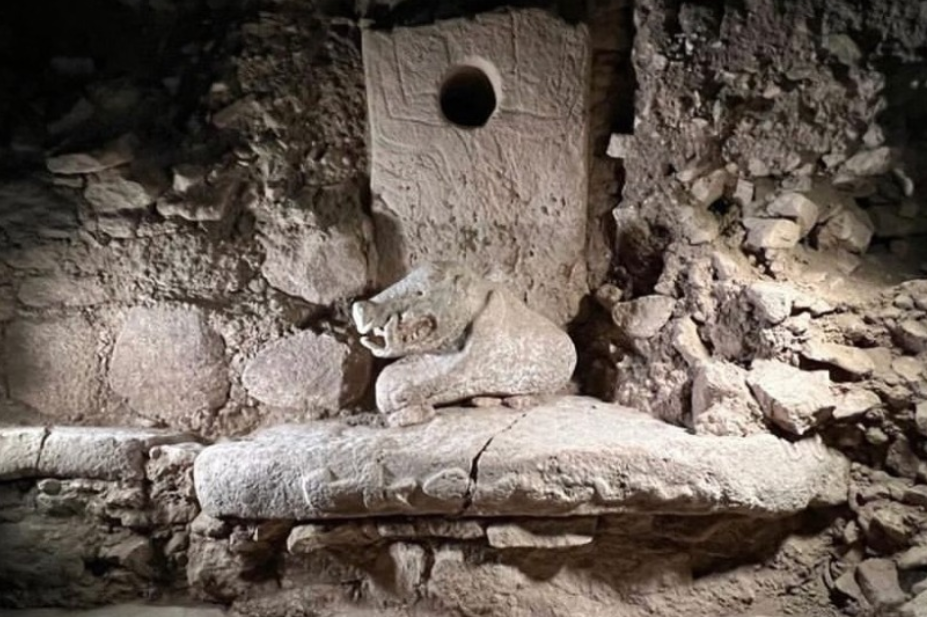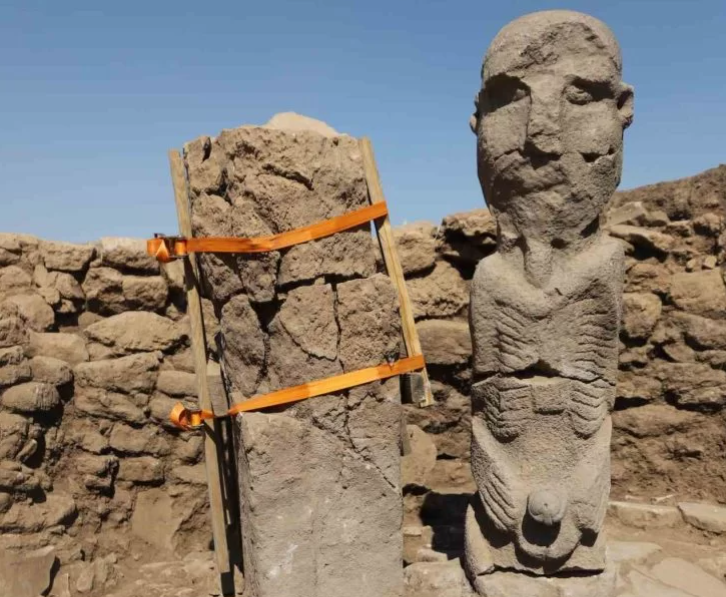With 12 thousand years of history, the first painted statue was found in Göbeklitepe, which is described as the “zero point of history”, and one of the most realistic human statues was found in Karahantepe. According to the statement made by the Ministry of Culture and Tourism, new findings are coming to light in Göbeklitepe and Karahantepe, which are followed with interest by everyone in Şanlıurfa, where excavations continue.
Within the scope of the Taş Tepeler Project, which sheds light on prehistory and where very important discoveries have been made on a world scale, human and animal sculptures were finally found in the works carried out in 9 archaeological sites this year.
A life-size statue of a wild boar made of limestone was found in the “D structure” of Göbeklitepe. The artifact, which has red, white and black pigment residues on its surface, was the first painted sculpture find dating back to the period.
The wild boar statue sits on a bench with ornaments that are presumed to be an “H-shaped” symbol, a crescent moon, two snakes and three human faces or masks.
During the excavations in Karahantepe, a human statue was unearthed. The 2.3-meter-high human statue, which is a candidate to be one of the most impressive examples of prehistoric art with a realistic facial expression, was found fixed to the ground.



A vulture sculpture placed on the wall and stone plates left on the ground were found in the area where the seated statue, which evokes a dead person and emphasizes the ribs, spine and shoulder bones.
With a 12 thousand year history, Şanlıurfa proudly displays the legacy of all developed civilizations. Şanlıurfa is a place considered holy by Jews, Christians and Muslims. According to the Old Testament, Prophet Abraham, the “father of the three monotheistic religions”, was born in Ur Kaśdim (City of the Chaldeans) and migrated to Harran with his family.
Some believe that Abraham was born in a cave near the site of the Mevlid-i Halil Mosque. The area and the cave are therefore considered sacred.
It is interesting that so many Neolithic sites such as Göbeklitepe, Karahantepe and Nevali Çori are located in almost the same area.
Recent archaeological studies show that Karahantepe may be even earlier than Göbeklitepe. This makes it the oldest known Neolithic site in the world. As at Nevali Çori and Göbeklitepe, Karahantepe has a similar settlement plan. Nearly 250 “T” shaped obelisks have been unearthed to date.
Within the scope of the “Göbeklitepe Culture and Karahantepe Excavations” project, Istanbul University started surface surveys in the “Keçilitepe” area 2 years ago. The studies are led by Professor Dr. Necmi Karul. Karahantepe and the entire Şanlıurfa region continue to change the known history of the world.
